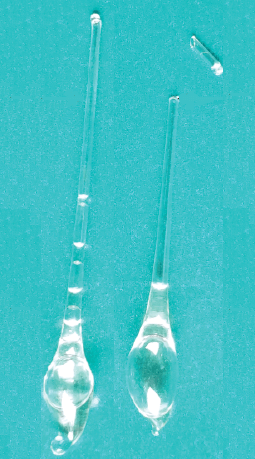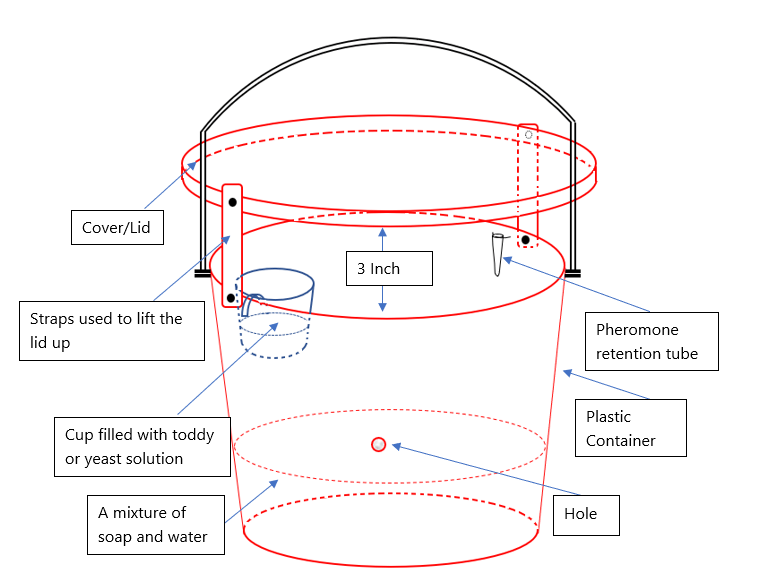The red coconut beetle is a deadly pest for coconut trees between the ages of 3-10 years. Adult female beetles lay their eggs on the following locations where they can enter the coconut tree.
• On the stem of the coconut branch and stems that had been cut-off
• In cracks at the base of the tree
• In cracks appearing in young roots when growing
• Holes caused by soil erosion due to watering
• Cracks in the trunk due to growth
• Injuries to the coconut tree while managing plantation
The red beetles, at the larvae stage of hatching from the eggs, enter the stem and start to eat internal tissues. This will cause the destruction of the bud area, base of the trunk and eventually collapse of the tree.
One of the recommended methods of pest management is to reduce the insect population by using pheromone traps. It is appropriate to use this method along with other controlling methods or after using such methods.
Two smells had been identified as those that attract red beetles; viz. A vapour emanates from the damaged tree (volatiles) and aggregation pheromones produced by male beetles to attract female beetles for colonization.
Pheromones containing 4 methyl 5 nenol are synthesized in laboratories and stored in small tubes. These pheromones must be kept in a special trap shown below, which can trap and destroy beetles.

The components & significance of the trap
• A red or blue plastic bucket with a lid with a capacity of 5 liters should be provided.
• The lid of the bucket should be adjusted so that it is about 3 inches above the opening of the bucket using two straps as shown in the figure.
• Make a small hole in the center of the bucket to allow excess water to overflow.
• Make a mixture of soap and water and fill the bucket up to the level of the hole already made in the bucket.
• A cup of about 75 mm be filled with toddy or yeast and sugar mixture and be placed inside the bucket. This mixture shall attract insects towards the filled cup.
• The chemical compounds in tubes obtained by laboratories are to be opened by breaking the seal; the aperture thus made should not be too large. The tubes thus opened to be placed in the section allocated to hold those and be tied with a piece of metal wire.


Leave a Reply